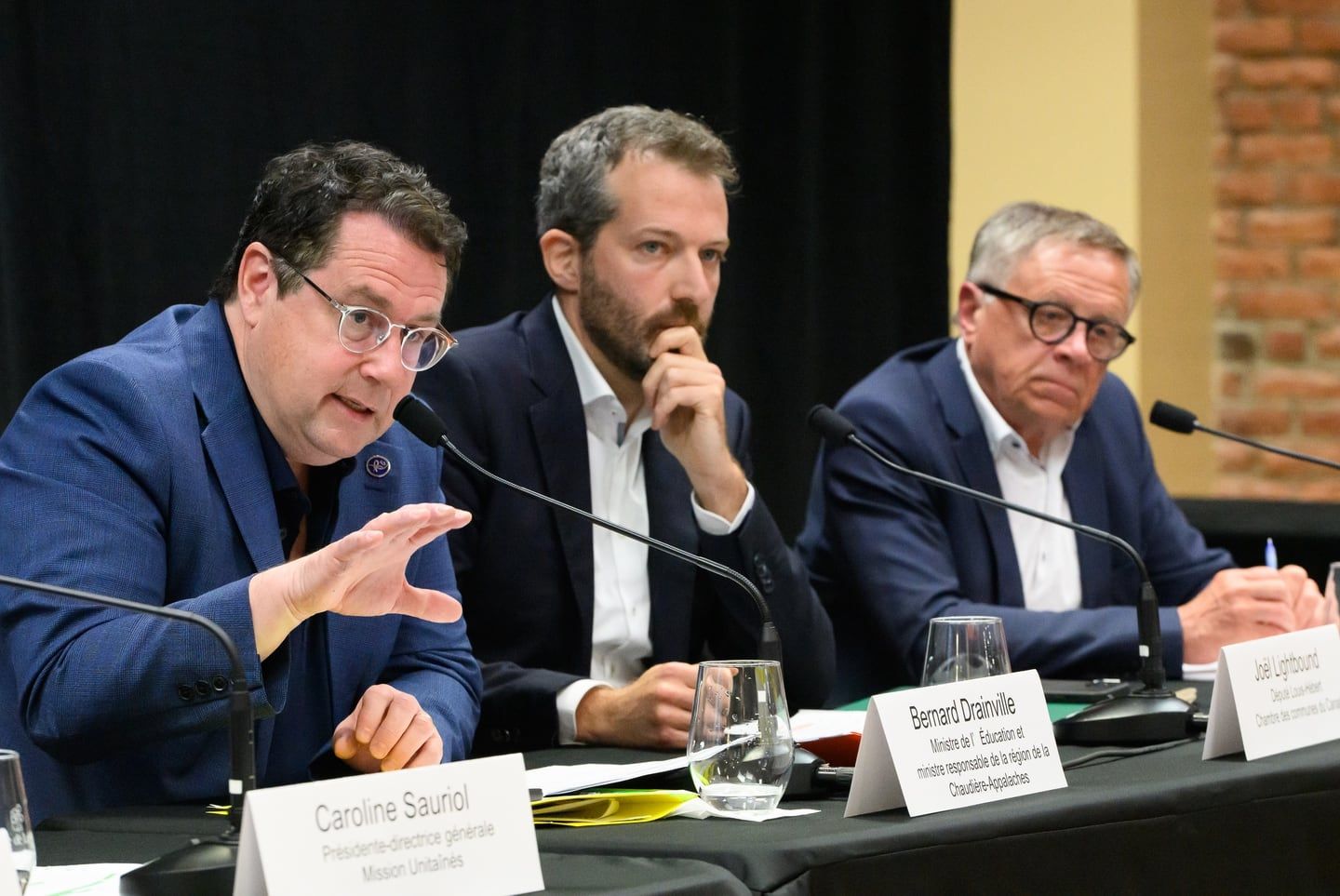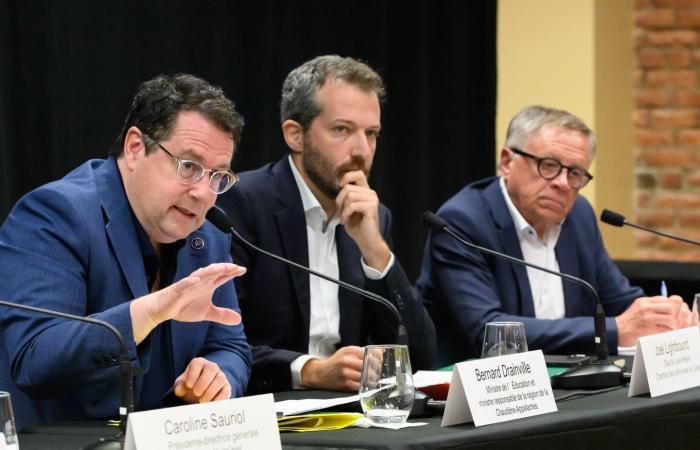For a second time, the Lehouillier administration rejects the idea of installing a Rapid Bus Service (SRB) on Boulevard Guillaume-Couture. Lévis is instead counting on the extension of reserved lanes around its “spine”.
After having suggested it last week, the mayor of Lévis confirmed his refusal on Monday, alongside an announcement on the creation of 100 housing units for low-income seniors.
“The government has done well to bring this back to reality […] reserved lanes,” rejoiced Mayor Lehouillier, after affirming that Quebec had “committed to building reserved lanes all along Guillaume-Couture.”
Although the definition of BRT is still debated, it generally consists of the provision of separate bus lanes, or “clean lanes”, in the center of the roadway.
The Lehouillier administration’s plan is instead to reserve a roadside lane in each direction for buses at all times. For the moment, phase 1 of the “Guillaume” project is restricted to three kilometers, at the head of the bridges and in the heart of the Desjardins borough.
In both cases, the installations provide pre-emption lights giving priority to buses at intersections.
The mayor of Lévis is delighted to see Quebec open to financing the development of reserved lanes all along Guillaume-Couture Boulevard. (Frédéric Matte/Archives Le Soleil)
Gilles Lehouillier, who signed the death warrant of a previous SRB project in 2017, has regularly affirmed that this mode of collective transport is not the right one for Lévis, considering it too expensive and not efficient enough for the population density of the South Shore.
“For all those who have followed the evolution of public transport in Lévis, it is obvious that a three-billion SRB is really not easy to pass,” the mayor of Lévis repeated on Monday. Especially since studies have shown that the modal transfer would be quite low.”
In any case, it goes without saying for the mayor that the only solution is to continue to add reserved lanes, since Lévis has already started their development on three kilometers of the boulevard. This would be the equivalent of “throwing them in the trash” for the chosen one.
“If we do an SRB, I have to redo all the work.”
— Gilles Lehouillier, mayor of Lévis
The mayor was enthusiastic about the idea of seeing Quebec pay for the extension of its reserved lanes project. “As soon as the government raises its hand to say we are ready to continue the reserve routes, we will be there […] This is very, very good news.”
Work on reserved lanes is already well underway on certain sections of Boulevard Guillaume-Couture. (Frédéric Matte/Archives Le Soleil)
The same thing, argues Drainville
For the Member of Parliament for Lévis and Minister responsible for Chaudière-Appalaches, Bernard Drainville, the reserved lanes of the Lehouillier administration and the SRB of the Caisse are the same thing.
“That [la CDPQ] calls SRB, in fact, it is reserved lanes like the one that the City of Lévis has already started to build,” assured Mr. Drainville, relying on “his understanding after verifications.”
“What the Caisse proposed is to continue the work of constructing reserved lanes that Lévis has already started.”
— Bernard Drainville, Member of Parliament for Lévis and Minister of Chaudière-Appalaches

Minister Drainville believes that there is no difference between the implementation of an SRB as proposed by the CDPQ and the development of reserved lanes as recommended by Lévis on Boulevard Guillaume-Couture. (Frédéric Matte/Le Soleil)
The minister specifies that he relies on a sketch concerning the SRB proposed in Lévis to conclude that “what the fund calls an SRB, in fact, are reserved lanes”. “The buses are on the right. There is no confusion,” he argued.
On page 88 of the CDPQ report, a figure illustrates buses at the side of the road, rather than in the center, as is generally the case in an SRB. A note states that “the insertion of the SRB on Boulevard Guillaume-Couture will be done in reserved lanes over the entire length, on either side of the boulevard, leaving room for road traffic in the center.”

In the CDPQ report, a figure and a short paragraph also seem to indicate that the “SRB” proposed in Lévis takes the form of reserved lanes. (CDPQ report)
Thursday, when he committed to building a third link and a structuring transport network for the Quebec region, Prime Minister Legault did not formally promise to finance the SRB – or reserved lanes – as imagined by the CDPQ. But he said he was “open” to carrying it out in collaboration with the cities.
“A real SRB”, assures the Fund
For its part, the CDPQ insists that its experts have indeed proposed the development of an SRB on its own site on Boulevard Guillaume-Couture, in Lévis.
“The rapid bus service (SRB) recommended by CDPQ Infra as part of the CITÉ Plan is not limited to the use of reserved lanes, but aims to establish a real SRB,” assures the spokesperson for the Cashier, Michelle Lamarche.
It is specified that the recommendation is “an articulated bus system which circulates in a right-of-way physically separated from automobile traffic lanes and allows for faster and more efficient service”.
“The SRB also benefits from a traffic light synchronization system which gives it priority and comfortable stations which make it possible to offer a better level of service to users,” the spokesperson also underlines. The type of system is recommended for the axes of boul. Guillaume-Couture and the Route des Rivières, due to anticipated traffic.”









